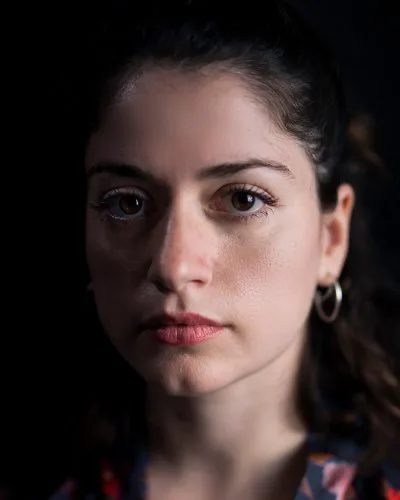output – interview
From the online publication "Fellows Published 2021-2022"
Elia Kalogianni was one of the nine fellows in the academic year 2021-2022. The interview below is published in the online publication “Fellows Published” that was launched in November 2023.
fellowspublished.rietveldacademie.nl
fellowspublished.rietveldacademie.nl
What was the starting point of your research project?
During the pandemic in 2020, I began researching and visiting Nafplio, the old capital of the First Hellenic Republic. The abandoned, graffiti-covered Xenia Hotel and the massive number of prickly pears surrounding it drew my attention—prickly pear being the common name for the opuntia cactus. According to local rumors, during Greece’s dictatorship, a large conference was organized in Nafplio in which men in power, junta supporters, were invited to make important decisions for the state. It was held at the Xenia Hotel, a truly opulent structure. They planted an abundance of prickly pears around it to keep the inhabitants and strangers away, resulting in an inaccessible fence. These plants are often used as natural barriers to divide territories. Nowadays, the city is full of them, and the hotel has been abandoned for more than 14 years. Over the years, nature appears to have taken over by spreading more “natural fences” around the hotel. Xenia and other abandoned buildings, pools, and shops from this period also formed an unspoken gallery of street art by locals—an architectural cemetery filled with structures and graffiti tags. This entire story piqued my interest and made me want to learn more about it. I’ve been to Nafplio several times, and every time I went there, Maria Filini, my dear friend and actor, took me to various locations where she spent her childhood. A whole new world unraveled when I started experiencing the “forgotten” city through her eyes.
What approach did you take for the fellowship research project, and how does it relate to the role of research in your practice?
I wanted to explore different ways to experience a city by uncovering its surrounding landscape and forgotten history. In addition, I was always fascinated by history, urbanism, architecture, and city culture. Through continuous research, this fellowship enabled me to investigate those terms. My project questions how we create, protect, transmit, deconstruct, and even exclude people and areas of a city. Incorporating historical, personal, and fictional elements came naturally and was critical to the final films. Much of the research was also conducted in the field.
It felt natural to begin reading, collecting material, documenting abandoned buildings and graffiti, speaking with locals, and visiting public and mainly private archives for found footage such as photographs, video, and texts. It was important to me to interact with those buildings and the stories behind them in some way. This project became very personal, almost ritualistic, for me; Maria, the actor; and Yorgos Kyvernitis, the director of photography. We didn't follow a strict script; we had ideas we developed through improvisations. The building’s and the surrounding area’s strong pasts, combined with Maria’s biographical story, were always present and became our main inspiration.
It felt natural to begin reading, collecting material, documenting abandoned buildings and graffiti, speaking with locals, and visiting public and mainly private archives for found footage such as photographs, video, and texts. It was important to me to interact with those buildings and the stories behind them in some way. This project became very personal, almost ritualistic, for me; Maria, the actor; and Yorgos Kyvernitis, the director of photography. We didn't follow a strict script; we had ideas we developed through improvisations. The building’s and the surrounding area’s strong pasts, combined with Maria’s biographical story, were always present and became our main inspiration.
You have been dedicated to inviting more theory into your work throughout the fellowship. Did this new engagement cause any changes in your practice as a filmmaker, and if so, what were they?
This process taught me various tools, such as how to search databases and archives for found footage and audio-visual collections, and taught me to enrich my fictional stories by employing research questions and embedding historical context. This new engagement made me consider the visual language produced by a combination of these new tools. The presentations and open discussions with the other fellows were highly beneficial in seeing how everyone approached their topic. I had never been able to conduct such a focused research project, which has enriched my practice and work. Throughout this research, I examined the connections between moving image, art, and film in terms of fiction, narration, abstraction, and symbolism. This is a next step in my practice.
